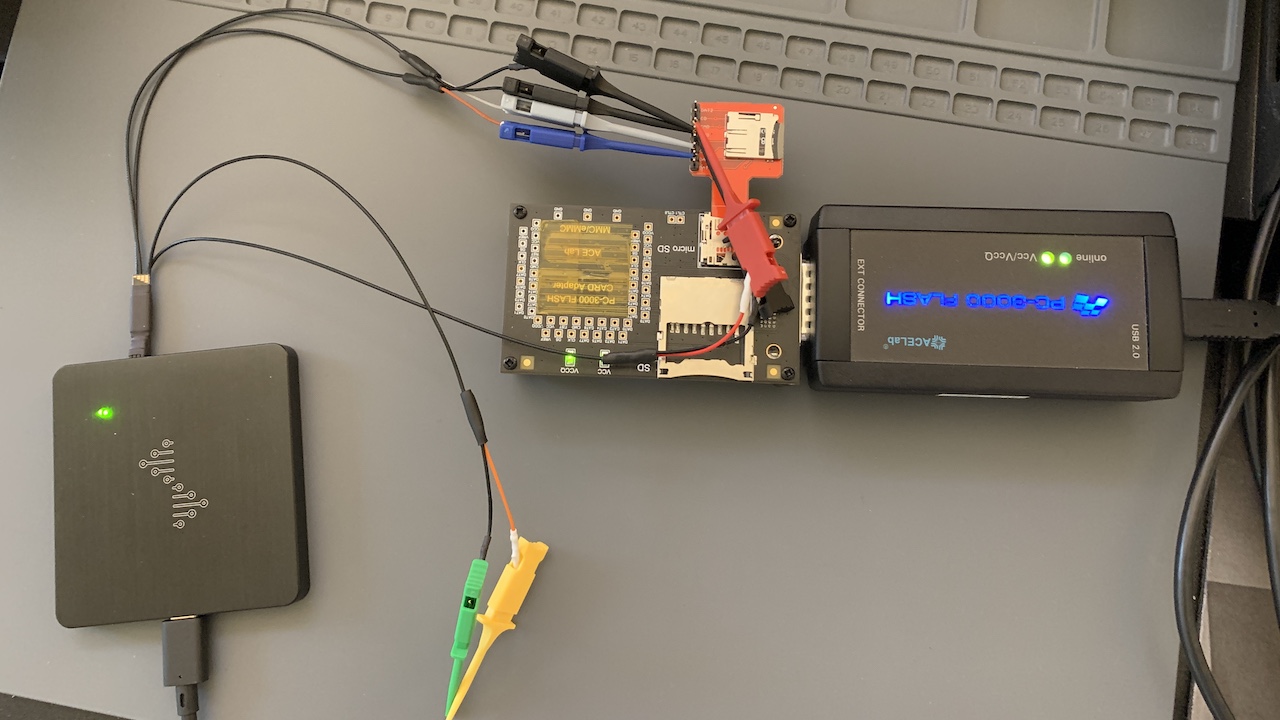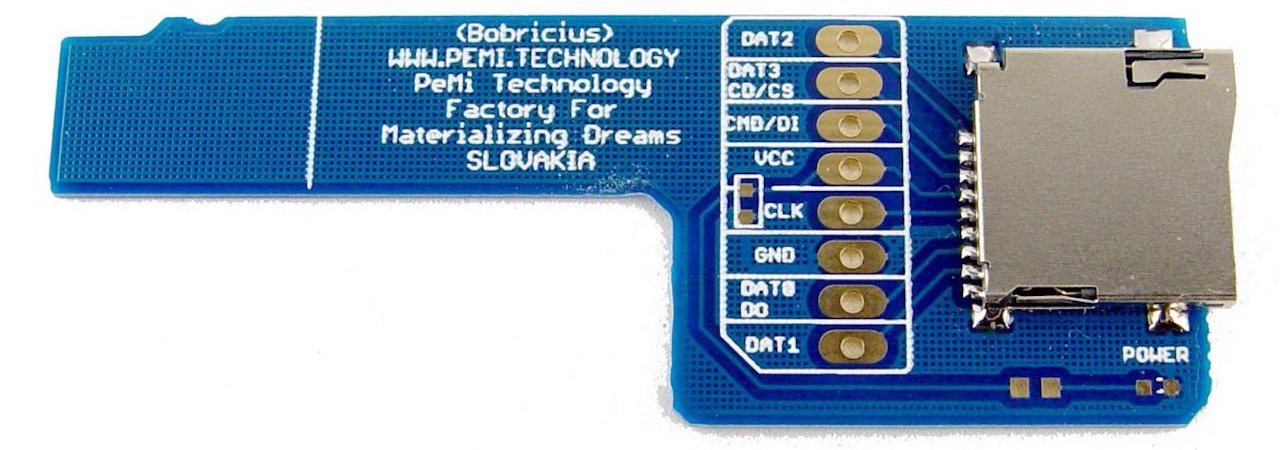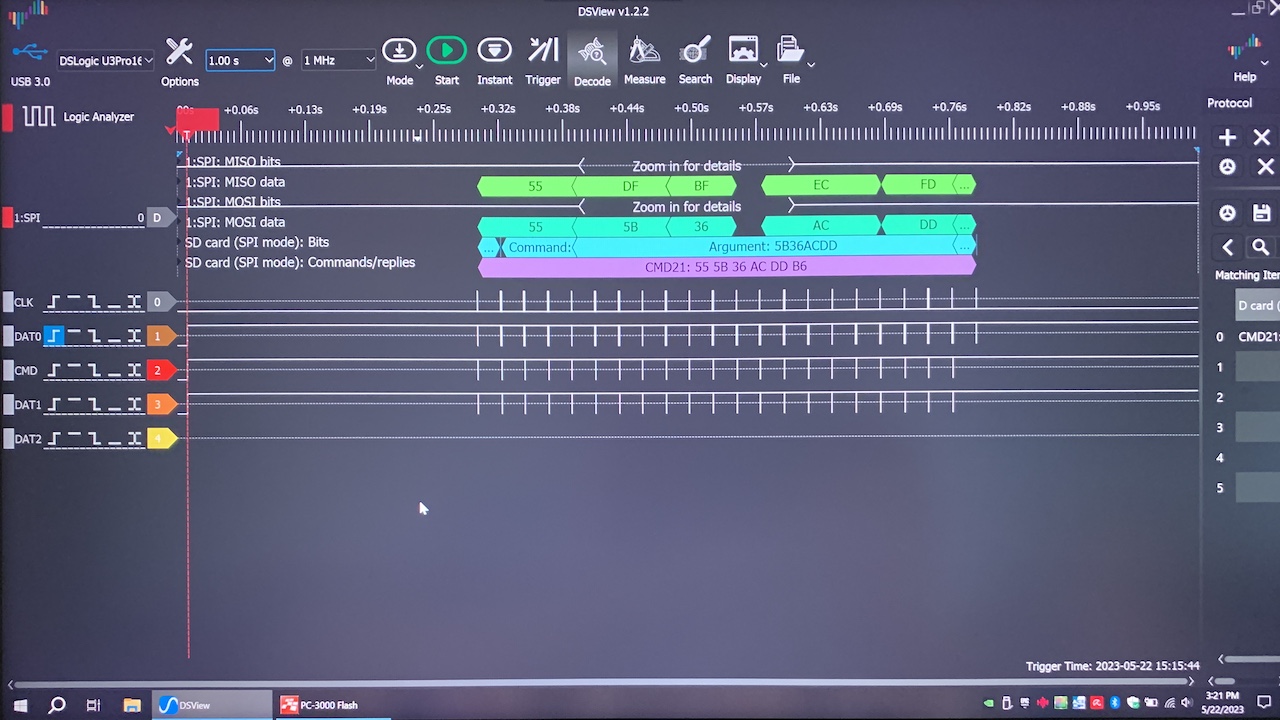The Serial Peripheral Interface (SPI) is a synchronous serial communication interface specification used primarily for short-distance communications between devices. SPI is used by a variety of data storage devices including Flash, EEPROM, MMC, and eMMC chips; Secure Digital (SD) cards, and USB drives.
SPI devices communicate in full duplex mode using a master-slave architecture. They utilize a four-wire serial bus with separate lines for clock (SCLK), master out (MOSI), master in (MISO), and chip select (SS/CS). The SPI bus operates with one master device and one or more slave devices. When dealing with memory devices, one assigns the host controller as the master and the the memory device as the slave.
The Serial Peripheral Interface is the de facto standard for device communication for numerous reasons. Firstly, being full duplex, it permits simultaneous communications in both directions between master and slave. Secondly, it offers high data throughput rates than other popular competitors such as I2C and SMBus. Thirdly, messages sent via SPI may be of any arbitrary size.

Serial Peripheral Interface Memory Devices
Many devices utilize the SPI Bus Protocol for communication, including a wide range memory devices. Some of these storage devices include Secure Digital (SD), MiniSD, and MicroSD (mSD) memory cards; MMC and eMMC memory chips; USB Flash memory drives; and SPI Flash memory chips.
In addition to SPI memory devices, a number of tools exists for both receiving and sending SPI communications. One common tool is an SPI host adapter. This device allows a computer to operate as the SPI master. Many hot adapters connect to a computer via USB and offer application-based scripting and programming capabilities.
Another development tool commonly used is a SPI Protocol Analyzer. This device samples and decodes a SPI bus’ signals, providing a detailed view of the data signals being transmitted.
Lastly, Mixed Signal Oscilloscopes and Logic Analyzers can both sample and decode SPI communications. i personally own and use a DreamSourceLab DSLogic U3Pro16 16-Channel USB-C digital logic analyzer for decoding signal protocols such as SPI. Capable of decoding over 95 different protocols with a maximum sampling rate of 1GHz, the U3Pro16 makes a wonderful data recovery tool.
In the image below, a DSLogic U3Pr016 logic analyzer samples SPI communications between a MicroSD memory card and an ACELab PC-3000 Flash. A MicroSD sniffer circuit board provides the binding posts the logic analyzer wires connect to.

Sniffer and Breakout Circuit Boards
Different sampling and decoding tools connect to and read SPI devices through different physical means. SPI host adapters and protocol analyzers often use standardized ports and adapters such as USB, memory card slots, and chip reader adapters. Oscilloscopes and logic analyzers, on the other hand, require the use of cables directly connected to the serial bus lines. Oftentimes, sniffer and breakout circuit boards are used to provide easy access to the serial bus lines. Such mounting and connection methods include physical binding posts, and through-hole and surface-mount soldering connections.

Sampling and Decoding Serial Peripheral Interface
Sampling and decoding SPI communications requires a hardware-software tool capable of processing digital signals. Devices such as protocol analyzers, oscilloscopes and logic analyzers not only show the data transmitted in both hexadecimal and decoded forms, they also display the recorded digital waveforms.
In the image below, a DreamSourceLab DSLogic U3Pr016 logic analyzer samples SD card communications via the SPI protocol. The Command (CMD) line carries both the Master Out Slave In (MOSI) and Master In Slave Out (MISO) signals. The CLK line provides the clock signal. In addition, the logic analyzer triggers (or starts recording) when the Data0 (DAT0) line transitions from a logic 0 to a logic 1. Lastly, the logic analyzer recorded one second of data at a sample rate of 1 MHz.

Recommendations
The Serial Peripheral Interface protocol is one of the most popular and common short-distance communication protocols available today. With full-duplex capabilities, devices often implement this four-wire bus with as little as just two wires. Knowing how to both sample and decode SPI communications is a valuable skill for any data recovery professional to acquire.
Firstly, many memory devices such as SPI Flash ROM exclusively use the SPI protocol to read and write data. A plethora of devices ranging from servers, computers, tablets, smartphones and cameras to household appliances use SPI Flash ROM to store their boot code and to boot from.
Secondly, many memory devices such as Secure Digital (SD) memory cards and Universal Serial Bus (USB) drives utilize the SPI protocol as an alternate method to read and write data. If a memory device fails to work using its default communication protocol, it may still be accessible using auxiliary communication protocols such as Serial Peripheral Interface.
IT-SD Related Articles




